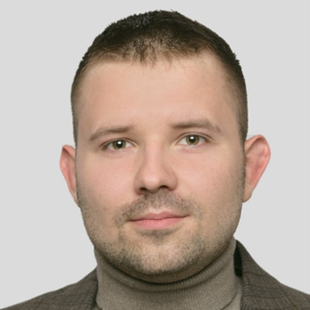Interview With Ronald L. Dalman, MD

Ronald L. Dalman, MD
Ronald L. Dalman, MD, is an esteemed faculty member at Stanford Surgery, where he has served since 1992 and directed the Vascular Surgery program from 2005 to 2021. Currently, he holds the distinguished Chidester Professorship in the Department of Surgery. His clinical specialties include managing aortic diseases and lower extremity circulatory disorders. He is a member of several professional boards and serves as Co-Director for the Cardiovascular Service Line at Stanford Health Care. Dr. Dalman was also instrumental in founding the Cardiovascular Institute at Stanford School of Medicine. Before his Stanford appointment, he was Chief of Vascular Surgery at the Veterans Affairs Palo Alto Health Care System for 14 years. Dr. Dalman's research focuses on abdominal aortic aneurysm (AAA) disease, and his laboratory has been continuously funded by the National Institutes of Health since 1999.
What are your thoughts on the prevalent stigma that suggests surgeons cannot excel as both skilled operators and academic researchers? How important is it for aspiring surgeons to have role models like you who demonstrate that success is possible in both roles?
Clinical skills and research abilities are complementary, and clinical investigators play a crucial role in maintaining the relevance of scientific research. The failure of many attempts to develop AAA suppression strategies is attributed to a lack of firsthand experience with aortic disease among researchers. For example, animal models and surgical specimens, often representing advanced stages of the disease, may not reflect its underlying causes. Clinical insights are necessary to ensure practical applications in research. Clinicians can benefit from scientific discoveries to improve clinical outcomes, while scientists can enhance their research impact by understanding the clinical applications. An academic surgical career is professionally rewarding because of the synergy between these two domains.
During your time at Stanford, you conducted numerous AAA clinical trials. Do any of these trials hold special significance to you? What were the key findings and takeaways from these trials?
I am especially proud of two significant accomplishments: the AAA-STOP Exercise Trial conducted a few years ago for early abdominal aortic aneurysm intervention, and the ongoing LIMIT Trial focusing on limiting AAA disease with metformin. The absence of proven medical interventions for AAA disease progression makes these studies particularly important. If we can identify safe and effective inhibition strategies for early AAA disease, it could revolutionize vascular surgery. These inhibitors would not only prevent or delay the need for surgical repair but also optimize long-term outcomes of aortic endografting by addressing issues like late migration, secondary intervention and late rupture. The development of regulations by the U.S. Food and Drug Administration for long-term follow-up of patients' post-endovascular aortic aneurysm repair highlights the limitations of current treatment paradigms. Complementary medical regimens with favorable therapeutic indices have the potential to transform vascular surgical practice. My focus as a surgical investigator is to translate research interests into meaningful changes in clinical practice, and these trials are the most fulfilling and inspiring in that regard.
As a surgical innovator, what advancements do you believe are most significant in the field of vascular surgery? What do you consider to be the next significant breakthrough?
There are several areas of focus that should be at the forefront in the field:
- Minimizing Treatment Morbidity: We should strive to minimize the adverse effects of the treatments we offer. This will improve patient outcomes and experience.
- Combining Medical and Surgical Interventions: To achieve long-term improvements in patients' quality of life, we should focus on integrating medical and surgical approaches.
- Improving Cost-Effectiveness: Optimizing the cost-effectiveness of our treatments will help make our treatments more accessible and affordable for all patients.
- Optimizing Indications for Intervention: We need to refine our indications for intervention to ensure that the right patients receive the right treatment at the right time.
- Personalized Medicine: Considering a more personalized approach based on genomics could ensure that the right treatment is tailored to the right individual, optimizing outcomes.
- Expanding Outpatient and Ambulatory Treatment: Many procedures can be transitioned to outpatient and ambulatory settings, which require fewer resources and can improve patient experience.
- Public Health Focus: In the U.S. as well as other countries, there are disparities in who receives what kind of treatment and when. We need to address these disparities and improve access to optimal treatment for all populations.
Vascular surgery encompasses diagnosis, medical and surgical treatment, epidemiology and collaboration with device manufacturers for optimal interventions. Instead of solely focusing on individual advancements like stents or imaging techniques, we should integrate these innovations into a broader clinical improvement. By considering all aspects of care, we can achieve the best outcomes for our patients and seize future opportunities in the field.
As the former chief of vascular surgery at Stanford University and founding director of the Vascular Surgical Residency Program, what qualities were you seeking in candidates?
At Stanford, we aim to train future leaders in vascular surgery. Different institutions have different strengths such as high procedural volume, expertise in complex arterial diseases, limb salvage or venous disease management. Our institution prides itself on being on the cutting edge of procedural, device and medical management science. We are therefore looking for candidates who have a broad vision of the specialty and their own career goals in addition to mastering the clinical and procedural care of patients with vascular diseases. This is our approach to nurturing the next generation of leaders in vascular surgery.

This article was authored by Luka Mitar, a medical student at School of Medicine University of Zagreb, in Zagreb, Croatia, and a member of ACC's Medical Student Section. Twitter: @LukaMitar2.
This content was developed independently from the content developed for ACC.org. This content was not reviewed by the American College of Cardiology (ACC) for medical accuracy and the content is provided on an "as is" basis. Inclusion on ACC.org does not constitute a guarantee or endorsement by the ACC and ACC makes no warranty that the content is accurate, complete or error-free. The content is not a substitute for personalized medical advice and is not intended to be used as the sole basis for making individualized medical or health-related decisions. Statements or opinions expressed in this content reflect the views of the authors and do not reflect the official policy of ACC.
